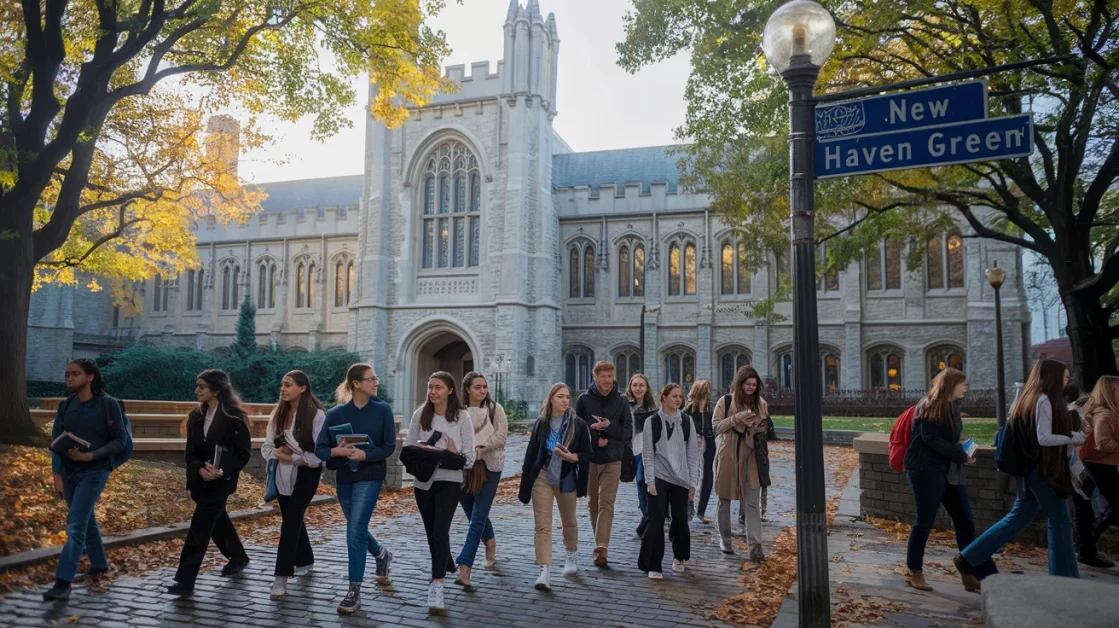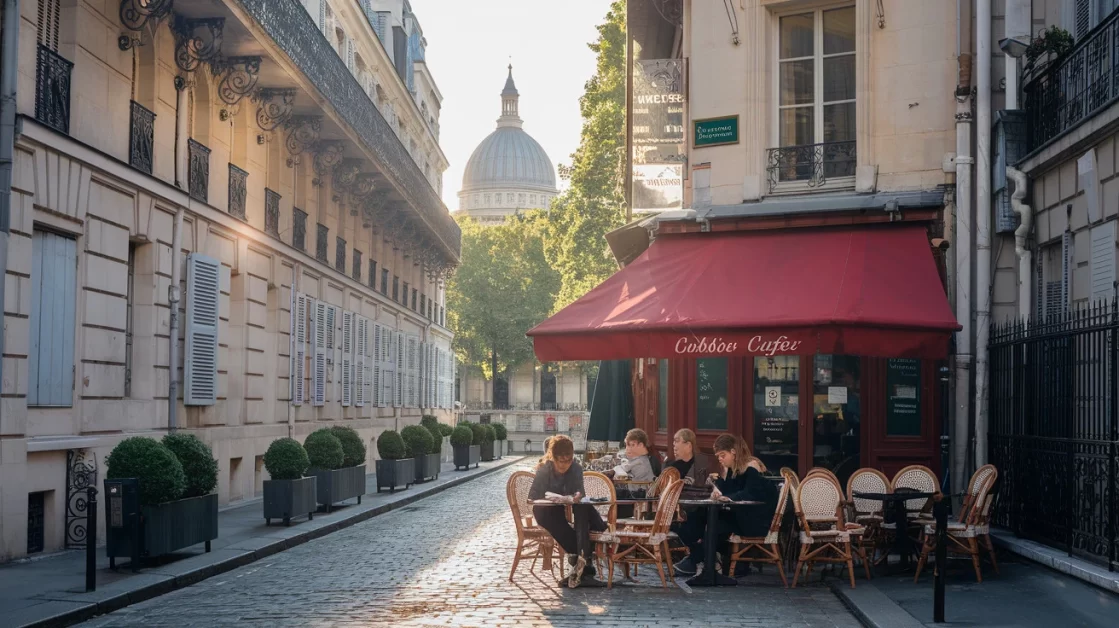
Step back in time and embark on a journey through history, right at the doorstep of some of the world’s most prestigious universities. These hallowed halls of learning aren’t just centers of academic excellence; they’re also gateways to a treasure trove of historical wonders.
From the cobblestone streets of Harvard to the medieval spires of Oxford, each university town boasts a unique tapestry of historical sites that have witnessed centuries of human achievement. But here’s the catch: while millions flock to these institutions for their academic reputation, many overlook the hidden gems that surround them. Are you missing out on experiencing the rich cultural heritage that these locations offer?
Get ready to uncover the Top Historical Sites Near Famous Universities. We’ll take you on a virtual tour from the ivy-covered walls of Yale to the romantic boulevards of Paris near the Sorbonne. Discover how these ancient landmarks have shaped not just the universities, but the very fabric of human knowledge and progress. Whether you’re a history buff, a curious traveler, or a prospective student, this guide will unveil the captivating stories etched in stone and time around these esteemed centers of learning.
Exploring Harvard's Historical Surroundings

Harvard University’s location in Cambridge, Massachusetts, places it at the heart of American history. The surrounding area offers a wealth of historical sites that complement the university’s academic prestige.
A. Freedom Trail: A Journey Through American Revolution
The Freedom Trail, a 2.5-mile-long path through downtown Boston, connects 16 significant historical sites. This red-brick trail provides a unique opportunity to walk in the footsteps of America’s founding fathers.
Key Sites on the Freedom Trail | Historical Significance |
|---|---|
Boston Common | Starting point of the trail |
Massachusetts State House | Seat of state government |
Paul Revere House | Home of the famous patriot |
USS Constitution | Oldest commissioned warship |
B. Boston Common: America’s Oldest Public Park
Established in 1634, Boston Common holds the distinction of being America’s oldest public park. This 50-acre green space has witnessed numerous historical events and continues to be a focal point for public gatherings.
C. USS Constitution Museum: Naval History Up Close
The USS Constitution Museum offers visitors an immersive experience into naval history. Located in the Charlestown Navy Yard, it provides:
Interactive exhibits
Hands-on activities
Original artifacts from the USS Constitution
These historical sites near Harvard University offer students and visitors alike a chance to explore America’s rich heritage, complementing the academic experience with tangible connections to the past.
Yale's New Haven Heritage

Yale University’s surroundings are steeped in history, offering a rich tapestry of colonial and revolutionary-era landmarks. This section explores three key historical sites that showcase New Haven’s heritage.
New Haven Green: Colonial-Era Town Square
The New Haven Green, established in 1638, stands as a testament to early American urban planning. This 16-acre park serves as the heart of New Haven’s historic district and remains one of the oldest town squares in New England. Visitors can admire:
Three historic churches dating back to the 18th and 19th centuries
The Amistad Memorial, commemorating the famous slave revolt
The Bennett Fountain, a Victorian-era landmark
Grove Street Cemetery: Final Resting Place of Notables
Established in 1796, Grove Street Cemetery is a National Historic Landmark and the first chartered burial ground in the United States. This cemetery is notable for its:
Egyptian Revival gateway
Final resting place of numerous Yale luminaries and historical figures
Notable Figures | Contribution |
|---|---|
Eli Whitney | Inventor of the cotton gin |
Noah Webster | Lexicographer and author |
Charles Goodyear | Developer of vulcanized rubber |
Pardee-Morris House: 18th-Century Architecture
The Pardee-Morris House, built circa 1750, offers a glimpse into 18th-century New England life. This restored structure:
Survived burning by British forces during the Revolutionary War
Features period furnishings and exhibits on colonial life
Hosts seasonal events and guided tours
These historical sites near Yale University provide a captivating journey through New Haven’s rich past, offering visitors a chance to explore the area’s colonial roots and revolutionary history.
Oxford's Ancient Landmarks

Oxford, home to one of the world’s oldest universities, is steeped in history and boasts numerous ancient landmarks. These architectural marvels not only serve as testament to the city’s rich past but also continue to play vital roles in academic and cultural life.
Bodleian Library: Centuries of Knowledge
The Bodleian Library, established in 1602, stands as one of the oldest libraries in Europe. Its vast collection of over 13 million printed items makes it a treasure trove for scholars and researchers.
Feature | Description |
|---|---|
Founded | 1602 |
Collection | 13+ million items |
Notable Areas | Divinity School, Duke Humfrey’s Library |
Oxford Castle: Norman Medieval Fortifications
Oxford Castle, with its roots in the 11th century, offers a glimpse into the city’s medieval past. The castle’s rich history includes:
Norman tower
Saxon stone-built St. George’s Tower
18th-century prison buildings
Carfax Tower: Panoramic Views of Historic Oxford
Carfax Tower, the only remaining part of the 13th-century St. Martin’s Church, provides visitors with breathtaking views of Oxford’s dreaming spires.
Christ Church Cathedral: Tudor-Gothic Masterpiece
Christ Church Cathedral, a unique dual-purpose building serving as both college chapel and cathedral, showcases exquisite Tudor-Gothic architecture. Its notable features include:
Tom Tower, designed by Sir Christopher Wren
The Great Hall, inspiration for Hogwarts in Harry Potter films
Intricate stained glass windows
These landmarks not only enrich Oxford’s academic atmosphere but also attract history enthusiasts and tourists, making the city a prime destination for educational tourism and exploration of academic history.
Cambridge's Rich Past

Cambridge, home to one of the world’s oldest universities, offers a treasure trove of historical sites that beautifully complement its academic prestige. Let’s explore some of the most significant landmarks that showcase Cambridge’s rich past.
King’s College Chapel: Gothic Splendor
King’s College Chapel stands as a masterpiece of Gothic architecture, captivating visitors with its awe-inspiring beauty. Built over a century, from 1446 to 1515, this chapel boasts:
The world’s largest fan-vault ceiling
Intricate stained glass windows
Magnificent choir stalls
Fitzwilliam Museum: Art and Antiquities
The Fitzwilliam Museum, often called “the Fitz,” houses an impressive collection of art and artifacts spanning centuries. Visitors can explore:
Ancient Egyptian relics
Renaissance masterpieces
Modern and contemporary art
Collection | Highlights |
|---|---|
Antiquities | Greek vases, Roman sculptures |
Paintings | Works by Titian, Rembrandt, Monet |
Decorative Arts | Ceramics, textiles, furniture |
Cambridge American Cemetery: WWII Memorial
Located just outside the city, the Cambridge American Cemetery serves as a poignant reminder of World War II sacrifices. This meticulously maintained site features:
3,812 headstones of American servicemen
The Wall of the Missing, honoring 5,127 names
A memorial building with military maps and mosaic ceiling
These historical sites offer a glimpse into Cambridge’s multifaceted past, from medieval religious architecture to world-class art collections and solemn war memorials. As we move on, we’ll discover the equally fascinating historical landmarks surrounding another prestigious European institution, the Sorbonne in Paris.
Sorbonne's Parisian Time Capsules

The Sorbonne, one of the world’s oldest universities, is surrounded by a treasure trove of historical sites that offer glimpses into Paris’s rich past. These landmarks serve as living time capsules, each telling a unique story of French history and culture.
Notre-Dame Cathedral: Gothic Wonder
Notre-Dame Cathedral stands as a masterpiece of French Gothic architecture. Despite the recent fire, its grandeur remains awe-inspiring. The cathedral’s intricate facade, flying buttresses, and stunning rose windows continue to captivate visitors, showcasing medieval craftsmanship at its finest.
Panthéon: Neoclassical Monument to French Luminaries
Originally built as a church, the Panthéon now serves as a mausoleum for distinguished French citizens. Its neoclassical design and imposing dome make it a striking landmark. Inside, visitors can pay homage to notable figures like Voltaire, Rousseau, and Marie Curie.
Cluny Museum: Medieval Art and Architecture
Housing an extensive collection of medieval art, the Cluny Museum offers a window into the Middle Ages. The museum’s highlight is the series of “The Lady and the Unicorn” tapestries, considered one of the greatest works of medieval art.
Luxembourg Palace: Royal Residence Turned Senate
Once a royal residence, the Luxembourg Palace now serves as the seat of the French Senate. The palace’s beautiful gardens provide a serene escape from the city’s bustle, featuring:
Ornate fountains
Meticulously manicured lawns
Sculptures of French queens and female saints
Site | Period | Key Feature |
|---|---|---|
Notre-Dame | Gothic | Flying buttresses |
Panthéon | Neoclassical | Foucault’s pendulum |
Cluny Museum | Medieval | “The Lady and the Unicorn” tapestries |
Luxembourg Palace | Renaissance | French formal gardens |
These historical sites near the Sorbonne offer a journey through different epochs of French history, making them essential stops for history enthusiasts and casual visitors alike.
Conclusion

Historical sites near prestigious universities offer a unique blend of academic heritage and cultural richness. From Harvard’s colonial landmarks to the medieval marvels surrounding Oxford, these locations provide a tangible connection to the past. Yale’s New Haven, Cambridge’s storied streets, and the Sorbonne’s Parisian surroundings each contribute to a tapestry of historical significance that extends far beyond classroom walls.
Visiting these sites not only enriches one’s understanding of history but also enhances the educational experience. By exploring the historical contexts that have shaped these renowned institutions, students, faculty, and visitors alike can gain a deeper appreciation for the academic traditions they represent. These landmarks serve as silent teachers, offering lessons in architecture, social evolution, and cultural preservation that complement formal education in invaluable ways.
Ready to explore? Start your visa application today and get one step closer to your adventure!
Don’t let uncertainties hold you back. Our team of expert overseas education consultants is readily available to assist you. Whether you have inquiries about:
- Specific document requirements
- Interview preparation tips
- Visa application timelines
We’re ready to provide personalized guidance tailored to your unique situation. Get in Touch Today at: +919041818122 and begin your journey with Vrinda International.
The information provided in this blog is for general guidance purposes only. Visa policies, application procedures, and fees are subject to change without prior notice. For the most accurate and up-to-date details, we recommend contacting us directly or consulting official sources. Feel free to reach out to us for personalized assistance with your visa application or travel needs.



